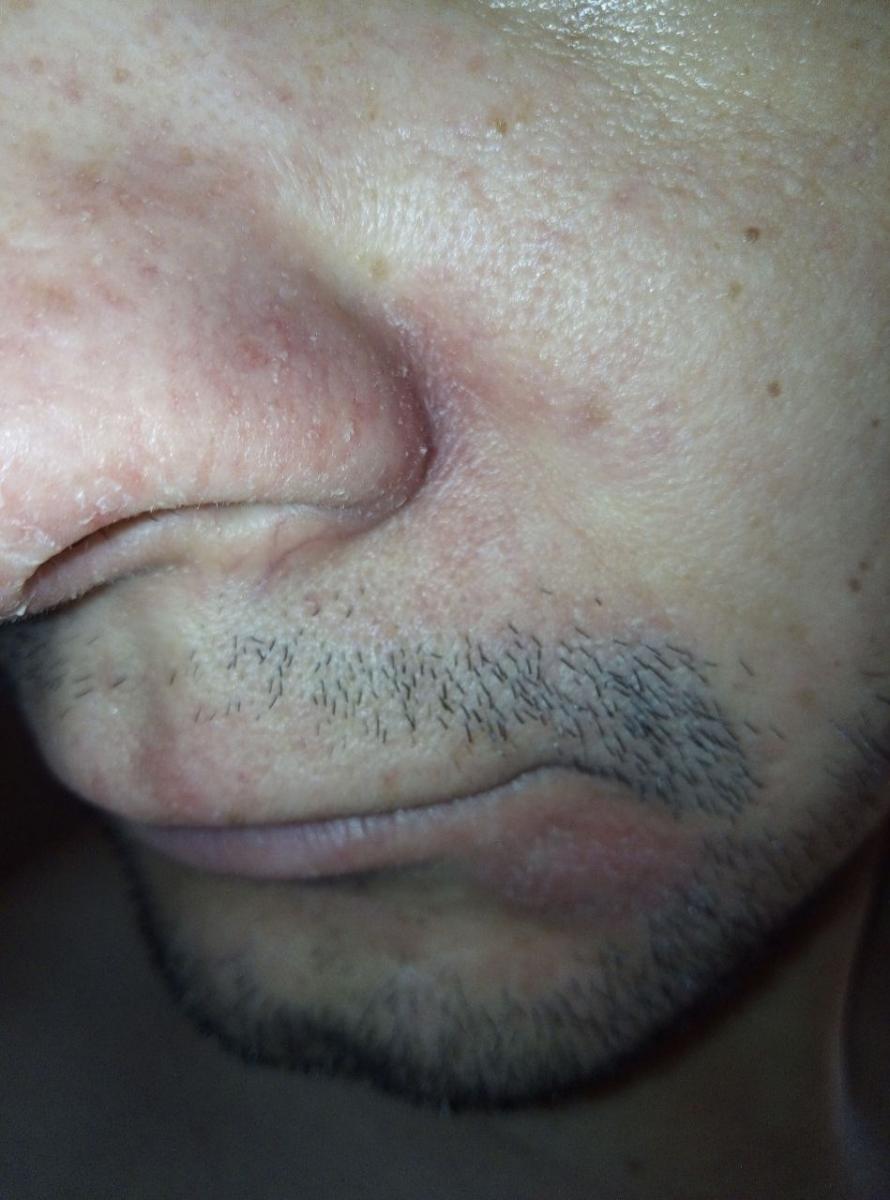Seborrheic dermatitis is a chronic inflammatory skin disorder that causes redness, dryness, and scaling. The disease usually affects those areas of the skin where the greatest number of sebaceous glands: scalp, face, ears. It can also lead to the formation of thick areas of dry skin. Symptoms range from mild to severe.
Seborrheic dermatitis occurs in infants as well as in older children and adults. This skin disorder is not contagious, nor does it cause damage or hair loss, but it can be a serious cosmetic problem.
Etiology (causes)
There is no definite reason for the development of seborrheic dermatitis.
In infants, seborrheic dermatitis may be caused by the gradual disappearance of hormones transmitted by the mother before delivery.
Yeast-like fungi, which occur on the surface of healthy skin with a frequency of up to 80%, may play a role in the onset of this disease.
Common triggers can also exacerbate or provoke the development of seborrheic dermatitis:
- Stress;
- Cold and dry weather;
- Hormonal changes;
- Severe concomitant pathology;
- Harsh detergents, solvents, chemicals and soaps.
Other factors that increase the risk of developing seborrheic dermatitis:
- Age: children under 3 months and adults over 60 years old;
- Diseases: HIV, acne, rosacea or psoriasis, Parkinson’s disease, epilepsy;
- Suppression of the immune system: taking immunosuppressants after organ transplantation, chemotherapy;
- Other conditions: alcoholism, depression, eating disorders.
Symptoms of Seborrheic dermatitis
Seborrheic dermatitis can appear on almost any part of the body, but most often it affects the scalp, eyelashes, eyebrows, and the area of the nasolabial triangle. The upper chest, back, groin and axillary regions are also frequently affected.
Symptoms include dandruff, diaper rash, dry flaky skin, and oily scales. In addition, there is slight itching, waxy skin (especially behind the ears) and flushing of the skin (especially in the area of the nasolabial triangle and in the forehead). With a mild course, hyperemia (redness) may be absent, especially in the scalp.
When should you see a doctor?
When the first signs of seborrheic dermatitis appear, you should consult a dermatologist. This is due to the fact that more serious diseases can begin with similar signs, such as:
- Psoriasis;
- Rosacea;
- Allergic contact dermatitis;
- Fungal infection;
- Pityriasis rosea;
- Systemic lupus erythematosus (similarity to erythema of the “butterfly” type).
To differentiate these conditions, in addition to a medical history and examination, a dermatologist may perform skin scrapings or other tests.
Also, consultation with a dermatologist is necessary in case of exacerbation of seborrheic dermatitis in order to prescribe timely treatment, to exclude the progression and development of complications.
Complications
Mostly in adults (and usually in more severe cases), if left untreated, seborrheic dermatitis can develop a secondary bacterial infection. This is manifested by more pronounced hyperemia, soreness of the skin, the occurrence of wetness.
Another possible complication of seborrheic dermatitis is associated with side effects of treatment (for example, from the prescribed topical corticosteroids: thinning of the skin and the appearance of telangiectasias – the expansion of blood vessels).
In adults, seborrheic dermatitis is often a chronic condition that requires periodic treatment to relieve symptoms and reduce the likelihood of recurrence of flare-ups.
Diagnostics
The doctor makes the diagnosis based on the medical history and examination, paying particular attention to the face and scalp. If the diagnosis is unclear or the patient does not respond to treatment, other clarifying manipulations are performed, up to biopsy and histological examination.
Treatment of seborrheic dermatitis
Treatment depends on the location of the dermatitis and the severity of the symptoms. With seborrheic dermatitis of the scalp in both children and adults, special shampoos are prescribed. Before rinsing off the shampoo, the scales that are least fixed to the skin can be removed with a soft brush.
If the scales are not easily removed, you can apply a few drops of mineral oil to the scalp before cleaning and shampooing. A medicated cream is sometimes used, especially for severe dermatitis. For mild symptoms, a non-drug cream is prescribed to keep the skin moist.
If the specific nature of dermatitis (for example, fungal) is identified, appropriate treatment is prescribed.
Skin care for seborrheic dermatitis:
- Cleanse your skin daily with mild soap or dandruff shampoo (baby shampoo);
- Soften scaly skin with mineral oil or olive oil and leave the oil on the skin for about an hour, then gently brush off the scales and wash the skin;
- Avoid using hair styling products during treatment;
- Avoid foods containing alcohol, as this can exacerbate seborrheic dermatitis;
- To reduce irritation, wear cotton clothing;
- If you have symptoms of seborrheic dermatitis around your eyelids, rinse your eyelids every night with baby shampoo and wipe off flaky skin with a cotton swab.



























** Should you identify any copyright infringement regarding the images on this page, kindly reach out to us at info@skinive.com.
Furthermore, please be advised that these photos are not authorized for any purpose.
